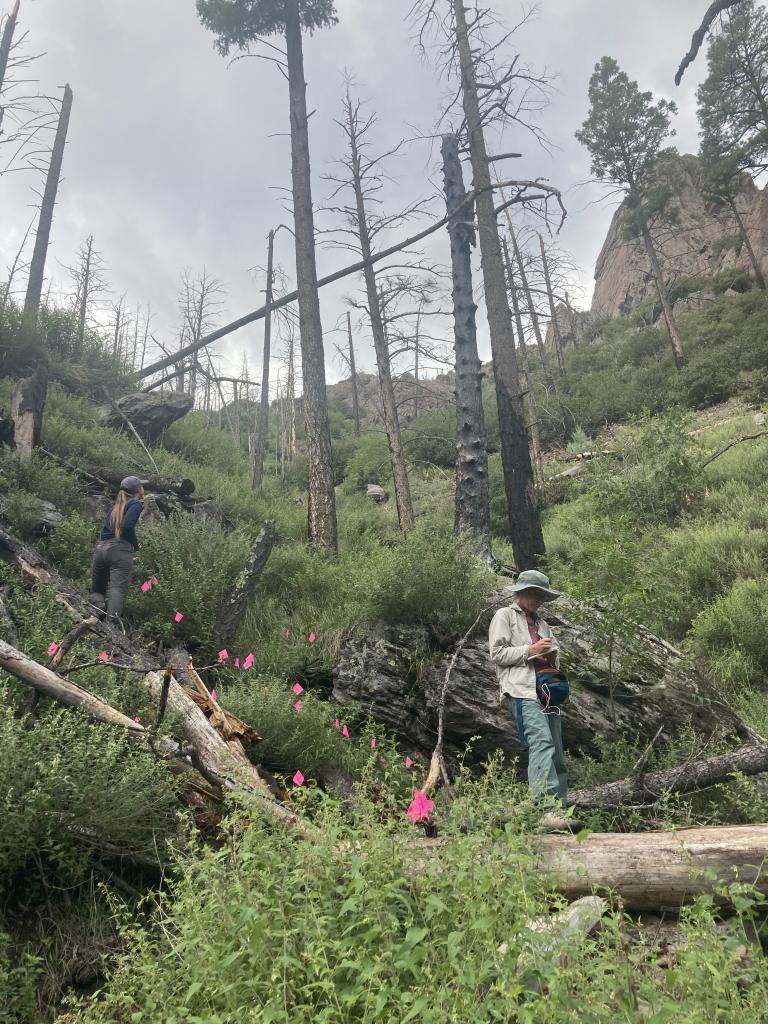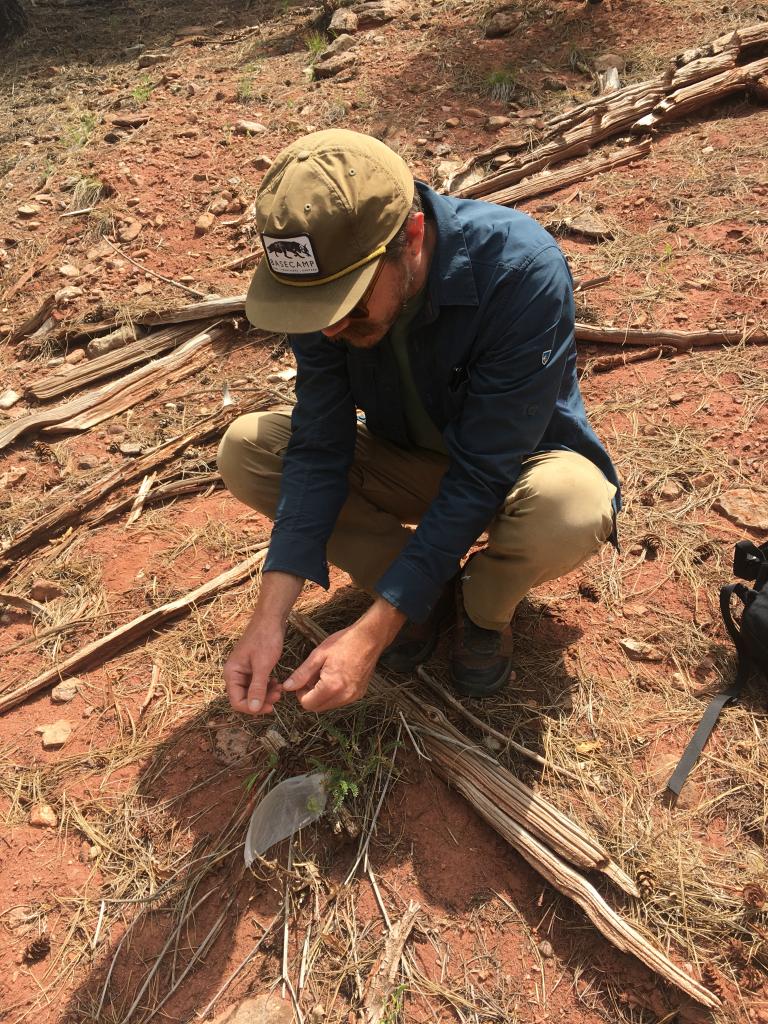The Southwest hosts extraordinary biodiversity, including many rare and endemic plant species. Rare plants include species protected by federal and state laws, as well as species with narrow ranges or specific threats that could render them at risk of catastrophic decline or extinction. Rare plants face an array of threats from climate change, development, and other land use stressors. IAE is implementing multiple approaches–including monitoring, seed banking, and policy guidance–to improve understanding and conservation of rare plants in the Southwest.
Surveys and Assessments
IAE Southwest conducts surveys of rare plant species as the first step to understanding a species’ distribution and health, particularly in response to management actions, climatic events or wildfire. A recent project by IAE SW surveyed Arizona willow (Salix arizonica) in the Carson and Santa Fe National Forests, a species which serves as an indicator of wetland health in unique high elevation wetlands of the desert Southwest. Another project involved surveys of Gila thistle (Cirsium gilense), Metcalfe’s penstemon (Penstemon metcalfei), Pinos Altos fame flower (Phemeranthus humilis), Mimbres figwort (Scrophularia micrantha), and Wright’s campion (Silene wrightii) in the Gila National Forest to determine the effects of multiple wildfires on sensitive species.

Rare Plant Demographic Monitoring
In 2017, the BLM launched a seasonal field crew to set up long term demographic monitoring plots for a select group of rare plants in New Mexico. Since 2023, this crew has been operated by IAE Southwest. The 10 rare plant species monitored by the crew include Aztec gilia (Aliciella formosa), Clover’s fishhook cactus (Sclerocactus cloverae), Mesa Verde cactus (Sclerocactus mesae-verdae), Tharp’s bluestar (Amsonia tharpii), Kuenzler’s hedgehog cactus (Echinocereus fendleri var. kuenzleri), Allred’s flax (Linum allredii), Gypsum wild buckwheat (Eriogonum gypsophilum), Taos spring parsley (Cymopterus spellenbergii), Ripley’s milkvetch (Astragalus ripleyii), and Gypsum Townsend’s aster (Townsendia gypsophila). The goal of this project is to collect a robust demographic dataset to better understand these species’ population dynamics through time, and what habitat factors or threats may be affecting them. This information can ultimately be used to make informed management decisions and provide protection for species showing population declines. A closer look at the rare plant monitoring crew’s season can be found in this blog by the 2023 crew.

Seed Banking
Ex-situ conservation through seedbanking and cryopreservation is critical for mitigating extinction risk of rare and sensitive species. IAE Southwest has partnered with the Center for Plant Conservation, the US Forest Service, New Mexico Natural Heritage, and New Mexico Energy, Minerals and Natural Resources Division to make conservation collections of Salix arizonica, violet milkvetch (Astragalus iodopetalus), smallheaded goldenweed (Lorandersonia microcephala), Linum allredii, Chama blazing star (Mentzelia conspicua), and Parish’s alkali grass (Puccinellia parishii).

Policy Guidelines and Conservation Strategies
IAE Southwest is writing a Conservation Strategy to guide BLM stewardship of Sclerocactus cloverae and Aliciella formosa. These two rare species are found only on the Nacimiento Formation in northwestern New Mexico. Both species are heavily impacted by oil and gas development and climate change. We are working to develop a robust strategy for conservation of these species that identifies management actions that will be compatible with the BLM’s multiple use mandate and most likely to be adopted by industry.
